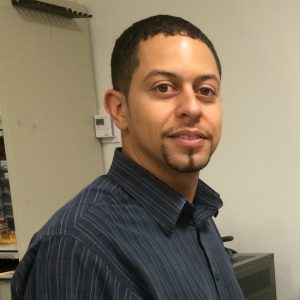“Phononic Barrier Communication: Channeling Information and Energy through Metallic Barriers with High Fidelity, High Efficiency and Low Bit Errors”
Wednesday, Feb. 24 at 1:00pm
Via Zoom
Email communications@ece.ufl.edu for Zoom info
| Made Possible with the Generous Support of Texas Instruments |
|---|
Abstract
There often arises a need to transmit information through closed, sealed containers without penetrating feedthroughs. One example is Faraday cages protecting sensitive electronics, where a penetration would represent a vulnerability or a source of RF noise; another instance is nuclear waste storage containers, where a penetration to the metallic shell would defeat the purpose of the container, yet to continuously monitor the health container and the contained radioactive waste some form of interior-to-exterior communication must take place.
In this communication, we shed light on our recent efforts in using phononics for mechanical communication through barriers, and the difficulties, challenges, workarounds, and finally success of channelling information through solid barriers with extremely high fidelity, very low bit error rate, and very high efficiencies. In this scheme, thin resonators of piezoelectric material are bonded in intimate contact with the surface of the barrier material. An oscillating electric field results in the generation of a periodic mechanical signal that propagates through the barrier. A receive resonator situated on the other side of the barrier will mechanically respond due to the surface strain imposed upon it.
We demonstrate high fidelity multi-channel communication at MHz frequencies with efficiencies as high as 70% for data transduction and 57% for energy transduction. Bit error rates as low as 10-10 have been demonstrated for data transduction rates of 1Mbps over a 72-hour period. In other demonstrations, a text book with 500,000 characters was transmitted through a single communication channel in 5s with no recorded errors. This opens the door to multichannel interleaving for higher-bandwidth applications such as image transmission.
Sandia National Laboratories is a multimission laboratory managed and operated by National Technology & Engineering Solutions of Sandia, LLC, a wholly owned subsidiary of Honeywell International Inc., for the U.S. Department of Energy’s National Nuclear Security Administration under contract DE-NA0003525. This talk describes objective technical results and analysis. Any subjective views or opinions that might be expressed in the paper do not necessarily represent the views of the U.S. Department of Energy or the United States Government.
Biography
Charles Reinke is a Senior Member of Technical Staff in the Photonic and Phononic Microsystems Department at Sandia National Laboratories, performing basic research involving novel nanophotonic and phononic devices with applications in metamaterials for optical systems, thermal waste heat recovery, and RF photonics. He received a B.S. in Physics from Jackson State University in 2000 and Ph.D. in electrical engineering from the Georgia Institute of Technology in 2010. Charles’ graduate work at Georgia Tech included efficient numerical techniques for the simulation of nonlinear optical effects in photonic crystals and the demonstration of low propagation loss photonic crystal waveguides.
